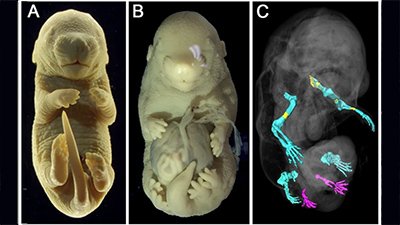
Are Genetic Mechanisms For Speciation Multiple Choice?
Speciation’s secrets are multiple-choice.
News Source
- ScienceNews: “Evolution’s Wedges”
What do phlox flowers, stickleback fish, monkeyflowers, and Bogota fruit flies have in common? They all suggest genetic mechanisms for speciation.
ScienceNews collected information to illustrate those genetic secrets. Naturally the article refers to evolutionary changes, but in every instance the organism is only moving toward a split into non-interbreeding species.
Species is a slippery word. The author writes, “Deciding what makes a species distinct from its evolutionary neighbors can get fuzzy, and there are about as many different definitions as there are biological disciplines. An old and often cited explanation comes down to sex. . . . Members of separate species don’t mate, at least not successfully.”
Creationists acknowledge that organisms often change over time, within the limits of created kinds. Furthermore, when similar organisms are isolated from one another, differences may accumulate until the populations become incapable of interbreeding. Speciation has then occurred.
Two varieties of purple phlox share their Texas habitat. The annual phlox, light purple elsewhere, are bright scarlet where they come in contact with the purple pointed phlox in the southeast near Austin. Butterflies distinguish them, and cross-breeding is decreased by about two-thirds. Since their hybridization rarely produces mature seeds, prevention of cross-breeding helps both populations. Duke University researchers discovered that enzymes controlled by two genes cause this color switch. “As far as speciation genes go, few examples put their stamp so directly on mating.”
Why evolution would tolerate two populations of would-be parents that can’t interbreed has been hotly debated among biologists.
The puzzle for evolutionary scientists, however, is to figure out some evolutionary advantage to a system which causes two phlox populations competing for the same resources to thrive in the same habitat. “Successful reproduction is a very important thing for organisms, so why evolution would tolerate two populations of would-be parents that can’t interbreed has been hotly debated among biologists.”
The stickleback fish provides an example of a species that may be on its way to speciation. Freshwater and saltwater sticklebacks are able to interbreed in the laboratory. The ocean version is armored for life in the sea, whereas the smooth freshwater variety would have difficulty coping with ocean predators, discouraging interbreeding in the wild. The ectodysplasin gene is responsible for this armor plating. Isolation may eventually allow sufficient differences to accumulate to make interbreeding impossible.
Yellow monkeyflowers may be en route to speciation through another genetic avenue. The Pacific and inland varieties prefer different environments. Genomic analysis has shown that one has an inversion. In other words, part of a chromosome is flipped. Such an arrangement discourages much shuffling of nearby genes. So while the varieties can interbreed, the association of genes for certain environmental tolerances tend to stay boxed in by the inversion. Since the hardiest genetic combinations for each environment survive, these varieties are discouraged from successful interbreeding in the wild.
Finally, the Bogota fruit fly possesses an overdrive gene which causes near-sterility if cross-bred into U.S. fruit flies. The overdrive gene does not cause sterility in the Bogota population because the Bogota flies also possess several genes which prevent expression of the birth control effect. These flies are the same species, but in the wild speciation would be expected. The Bogota fruit fly illustrates how certain combinations of genes can be advantageous.
As creationists we marvel at the ways God has designed for organisms to develop variety within their kinds. Notice that none of these examples showed any evidence of acquiring new information but only of reshuffling old information and losing information within certain populations. Isolation and natural selection can then lead to speciation.
Further Reading
- Get Answers: Speciation, Genetics
For More Information: Get Answers
Remember, if you see a news story that might merit some attention, let us know about it! (Note: if the story originates from the Associated Press, FOX News, MSNBC, the New York Times, or another major national media outlet, we will most likely have already heard about it.) And thanks to all of our readers who have submitted great news tips to us. If you didn’t catch all the latest News to Know, why not take a look to see what you’ve missed?
(Please note that links will take you directly to the source. Answers in Genesis is not responsible for content on the websites to which we refer. For more information, please see our Privacy Policy.)
Recommended Resources

Answers in Genesis is an apologetics ministry, dedicated to helping Christians defend their faith and proclaim the good news of Jesus Christ.
- Customer Service 800.778.3390
- © 2024 Answers in Genesis





